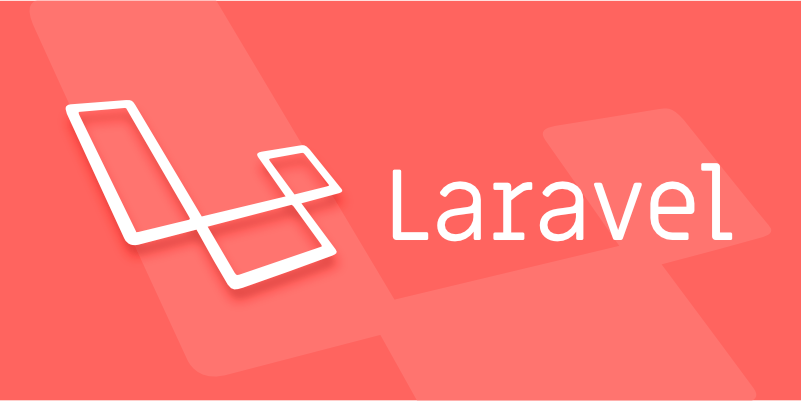Integrating Third-Party Packages via Composer in Laravel?
Jul 11, 2025 am 01:42 AMYes, integrating third-party packages via Composer in Laravel is straightforward. To install a package, run composer require vendor/package-name, such as composer require barryvdh/laravel-debugbar. Most modern Laravel packages auto-discover service providers and facades, but if not, manually add them to config/app.php under providers and aliases. Use php artisan vendor:publish to publish configuration files and assets, optionally targeting a specific provider. If issues arise, verify Laravel version compatibility, clear config/cache with php artisan config:clear and php artisan cache:clear, check documentation for special steps, confirm route/middleware setup, and run composer dump-autoload if classes are unrecognized.

Yes, integrating third-party packages via Composer in Laravel is straightforward and one of the most common ways to extend Laravel's functionality. The key is knowing how to pull in the package, register it properly, and use it as intended.

How to Install a Package Using Composer
Most Laravel-compatible packages are hosted on Packagist, which is Composer’s default repository. To install a package, you typically run:

composer require vendor/package-name
For example, if you want to install a popular Laravel debugging tool like Laravel Debugbar, you’d run:
composer require barryvdh/laravel-debugbar
This command downloads the package into your vendor directory and updates the composer.json and composer.lock files automatically.

In most cases, Laravel will auto-discover service providers and facades for you (starting from Laravel 5.5). If not, you might need to manually register them — more on that next.
Registering Service Providers and Aliases (If Needed)
Before Laravel 5.5, all packages required manual registration of service providers and aliases (facades) in the config/app.php file. Even though auto-discovery covers most modern packages, some older or custom packages may still require this step.
To register manually:
Open
config/app.phpAdd the service provider to the
providersarray:Barryvdh\Debugbar\ServiceProvider::class,
If the package provides a facade, add an alias to the
aliasesarray:'Debugbar' => Barryvdh\Debugbar\Facade::class,
If you're unsure whether auto-discovery is enabled for a specific package, check its documentation or look inside its composer.json file for "laravel": { "providers": [...] }.
Publishing Configuration and Assets
Some packages come with configuration files, views, migrations, or assets that need to be published to your application before they can be used.
To publish a package's resources, run:
php artisan vendor:publish
This command lists all available publishable resources. You can also target a specific package by adding its service provider class:
php artisan vendor:publish --provider="Barryvdh\Debugbar\ServiceProvider"
After publishing, you’ll find configuration files in config/, views in resources/views/vendor/, and so on. You can now customize them as needed.
When Things Don’t Work as Expected
Sometimes, even after installing and registering everything, things might not work right away. Here’s what to check:
Make sure you're using the correct version of the package compatible with your Laravel version.
Clear config and cache if you made changes:
php artisan config:clear php artisan cache:clear
Check the package’s GitHub page or documentation for known issues or extra steps.
If the package uses routes or middleware, make sure those are set up correctly.
Use
composer dump-autoloadif classes aren’t being recognized.
These troubleshooting steps often resolve unexpected behavior quickly.
That’s basically it. It’s not complicated, but there are a few moving parts to keep track of — especially when dealing with legacy packages or edge cases.
The above is the detailed content of Integrating Third-Party Packages via Composer in Laravel?. For more information, please follow other related articles on the PHP Chinese website!

Hot AI Tools

Undress AI Tool
Undress images for free

Undresser.AI Undress
AI-powered app for creating realistic nude photos

AI Clothes Remover
Online AI tool for removing clothes from photos.

Clothoff.io
AI clothes remover

Video Face Swap
Swap faces in any video effortlessly with our completely free AI face swap tool!

Hot Article

Hot Tools

Notepad++7.3.1
Easy-to-use and free code editor

SublimeText3 Chinese version
Chinese version, very easy to use

Zend Studio 13.0.1
Powerful PHP integrated development environment

Dreamweaver CS6
Visual web development tools

SublimeText3 Mac version
God-level code editing software (SublimeText3)
 Working with pivot tables in Laravel Many-to-Many relationships
Jul 07, 2025 am 01:06 AM
Working with pivot tables in Laravel Many-to-Many relationships
Jul 07, 2025 am 01:06 AM
ToworkeffectivelywithpivottablesinLaravel,firstaccesspivotdatausingwithPivot()orwithTimestamps(),thenupdateentrieswithupdateExistingPivot(),managerelationshipsviadetach()andsync(),andusecustompivotmodelswhenneeded.1.UsewithPivot()toincludespecificcol
 Sending different types of notifications with Laravel
Jul 06, 2025 am 12:52 AM
Sending different types of notifications with Laravel
Jul 06, 2025 am 12:52 AM
Laravelprovidesacleanandflexiblewaytosendnotificationsviamultiplechannelslikeemail,SMS,in-appalerts,andpushnotifications.Youdefinenotificationchannelsinthevia()methodofanotificationclass,andimplementspecificmethodsliketoMail(),toDatabase(),ortoVonage
 Strategies for optimizing Laravel application performance
Jul 09, 2025 am 03:00 AM
Strategies for optimizing Laravel application performance
Jul 09, 2025 am 03:00 AM
Laravel performance optimization can improve application efficiency through four core directions. 1. Use the cache mechanism to reduce duplicate queries, store infrequently changing data through Cache::remember() and other methods to reduce database access frequency; 2. Optimize database from the model to query statements, avoid N 1 queries, specifying field queries, adding indexes, paging processing and reading and writing separation, and reduce bottlenecks; 3. Use time-consuming operations such as email sending and file exporting to queue asynchronous processing, use Supervisor to manage workers and set up retry mechanisms; 4. Use middleware and service providers reasonably to avoid complex logic and unnecessary initialization code, and delay loading of services to improve startup efficiency.
 Managing database state for testing in Laravel
Jul 13, 2025 am 03:08 AM
Managing database state for testing in Laravel
Jul 13, 2025 am 03:08 AM
Methods to manage database state in Laravel tests include using RefreshDatabase, selective seeding of data, careful use of transactions, and manual cleaning if necessary. 1. Use RefreshDatabasetrait to automatically migrate the database structure to ensure that each test is based on a clean database; 2. Use specific seeds to fill the necessary data and generate dynamic data in combination with the model factory; 3. Use DatabaseTransactionstrait to roll back the test changes, but pay attention to its limitations; 4. Manually truncate the table or reseed the database when it cannot be automatically cleaned. These methods are flexibly selected according to the type of test and environment to ensure the reliability and efficiency of the test.
 Choosing between Laravel Sanctum and Passport for API authentication
Jul 14, 2025 am 02:35 AM
Choosing between Laravel Sanctum and Passport for API authentication
Jul 14, 2025 am 02:35 AM
LaravelSanctum is suitable for simple, lightweight API certifications such as SPA or mobile applications, while Passport is suitable for scenarios where full OAuth2 functionality is required. 1. Sanctum provides token-based authentication, suitable for first-party clients; 2. Passport supports complex processes such as authorization codes and client credentials, suitable for third-party developers to access; 3. Sanctum installation and configuration are simpler and maintenance costs are low; 4. Passport functions are comprehensive but configuration is complex, suitable for platforms that require fine permission control. When selecting, you should determine whether the OAuth2 feature is required based on the project requirements.
 Implementing Database Transactions in Laravel?
Jul 08, 2025 am 01:02 AM
Implementing Database Transactions in Laravel?
Jul 08, 2025 am 01:02 AM
Laravel simplifies database transaction processing with built-in support. 1. Use the DB::transaction() method to automatically commit or rollback operations to ensure data integrity; 2. Support nested transactions and implement them through savepoints, but it is usually recommended to use a single transaction wrapper to avoid complexity; 3. Provide manual control methods such as beginTransaction(), commit() and rollBack(), suitable for scenarios that require more flexible processing; 4. Best practices include keeping transactions short, only using them when necessary, testing failures, and recording rollback information. Rationally choosing transaction management methods can help improve application reliability and performance.
 Handling HTTP Requests and Responses in Laravel.
Jul 16, 2025 am 03:21 AM
Handling HTTP Requests and Responses in Laravel.
Jul 16, 2025 am 03:21 AM
The core of handling HTTP requests and responses in Laravel is to master the acquisition of request data, response return and file upload. 1. When receiving request data, you can inject the Request instance through type prompts and use input() or magic methods to obtain fields, and combine validate() or form request classes for verification; 2. Return response supports strings, views, JSON, responses with status codes and headers and redirect operations; 3. When processing file uploads, you need to use the file() method and store() to store files. Before uploading, you should verify the file type and size, and the storage path can be saved to the database.
 Asynchronous Task Processing with Laravel Queues
Jul 13, 2025 am 03:00 AM
Asynchronous Task Processing with Laravel Queues
Jul 13, 2025 am 03:00 AM
Laravelqueueshandlenon-immediatetaskslikesendingemailsorsyncingdatabyprocessingtheminthebackground.Tosetup,chooseaqueuedriver—syncforlocaldevelopment,redisordatabaseforproduction,withRedispreferredforhigh-volumeapps.Usephpartisanqueue:tableandmigrate






